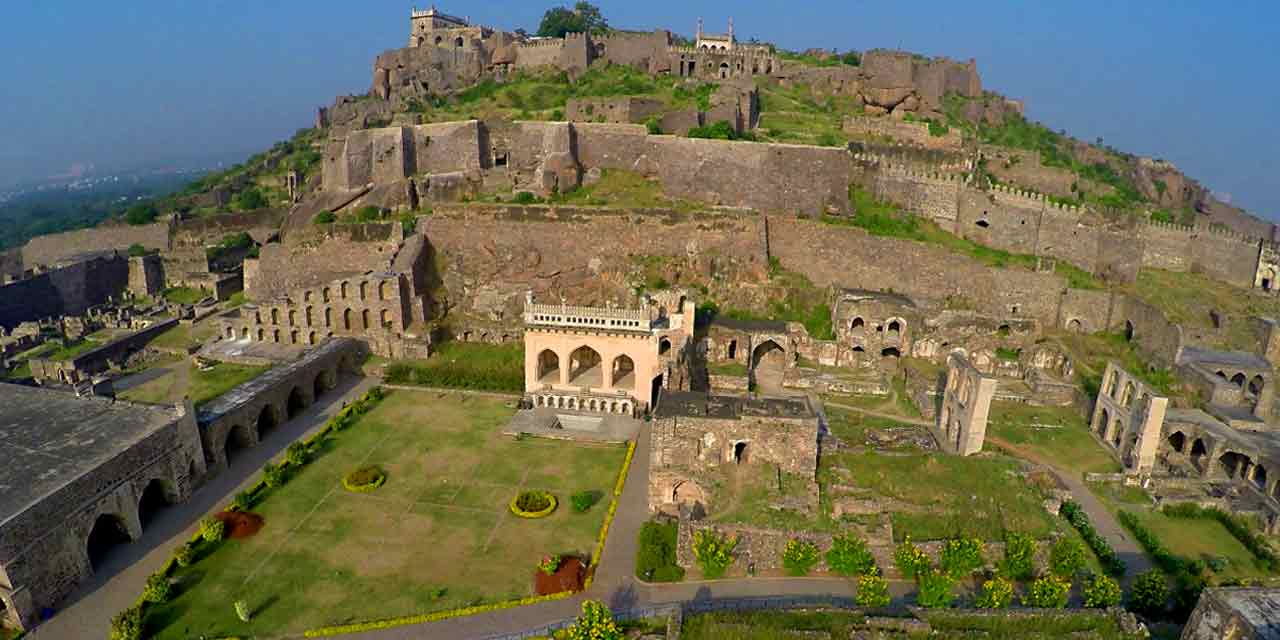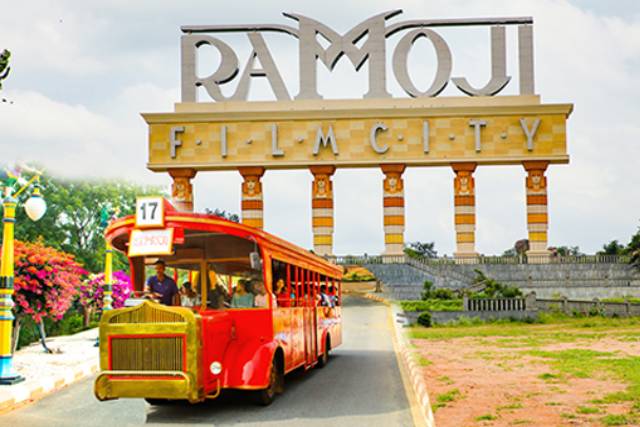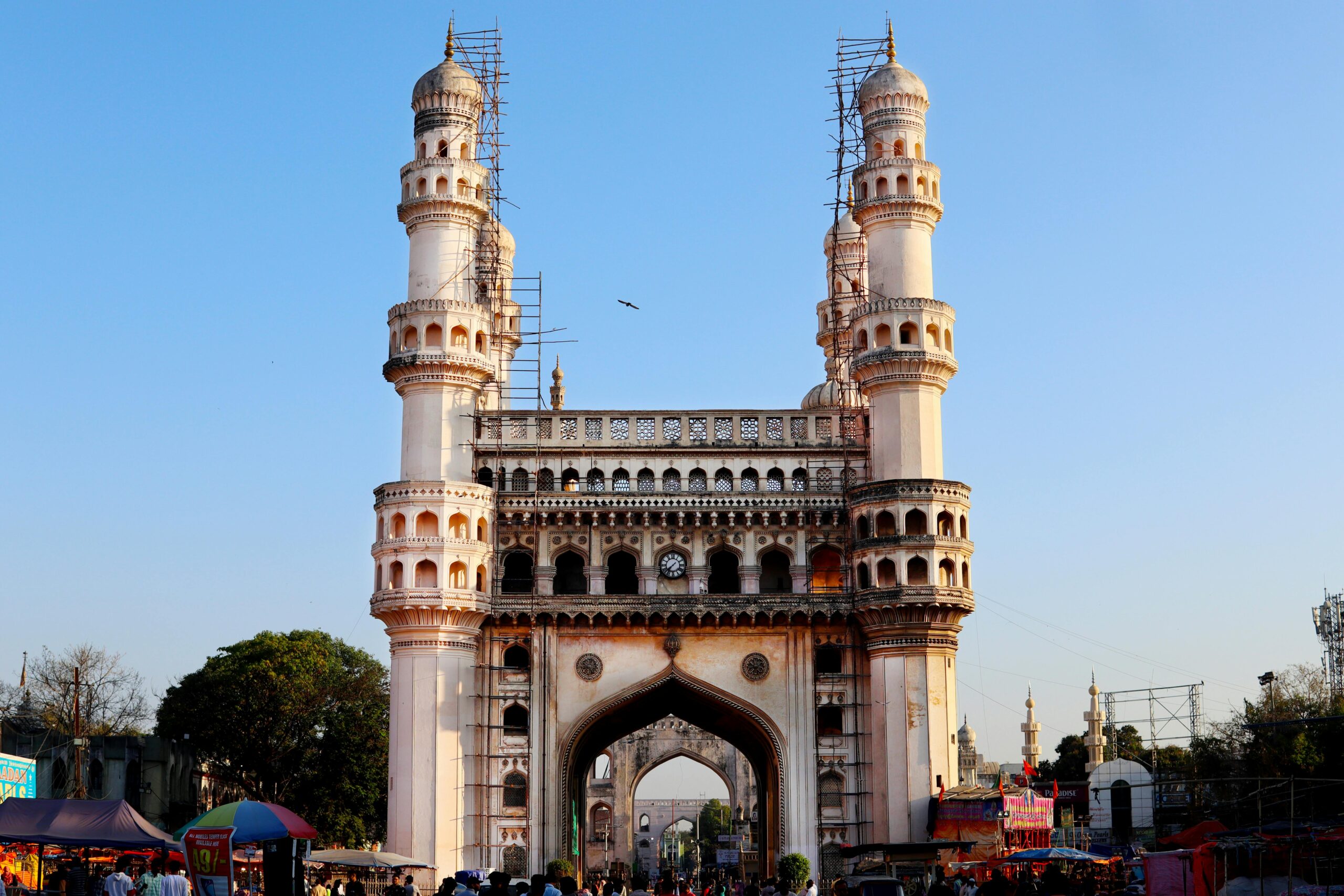Golconda Fort, an architectural marvel and a symbol of Hyderabad’s illustrious history, is a magnificent testament to the grandeur of the past. Nestled on the western outskirts of the city, this sprawling fortress is a blend of military strategy, artistic excellence, and historical significance. Once the thriving capital of the Qutb Shahi dynasty, Golconda Fort today stands as a proud reminder of the region’s cultural and economic heritage.
The Origin of Golconda Fort
The origins of Golconda Fort date back to the 12th century when it was a modest mud fort built by the Kakatiya dynasty of Warangal. Its strategic location on a granite hill made it a vital military outpost. Over time, the fort underwent significant transformations, particularly under the Bahmani Sultanate, which controlled the Deccan during the 14th century.
However, Golconda’s true rise to prominence occurred in the early 16th century when it became the capital of the Qutb Shahi dynasty. The Qutb Shahis transformed the fort into a formidable stone structure, equipping it with massive fortifications, ingenious water systems, and a sophisticated defense mechanism. This fortified citadel became the center of power, administration, and commerce, heralding a golden age for the region.
Golconda: The Diamond Capital of the World
Golconda’s fame extended far beyond its military might, thanks to its association with the diamond trade. The region surrounding the fort was home to some of the world’s most famous diamond mines, including the Kollur mines. These mines produced legendary diamonds like the Koh-i-Noor, Hope Diamond, and Regent Diamond, making Golconda synonymous with opulence and wealth.
The fort became a hub for diamond trading, attracting merchants and traders from across the globe. Persian and European merchants frequented Golconda, marveling at the quality and brilliance of its gems. The wealth generated from this trade contributed to the splendor of the Qutb Shahi dynasty and the architectural wonders within the fort.
Architectural Brilliance of Golconda Fort
The architecture of Golconda Fort is a remarkable example of Indo-Islamic design, reflecting the artistic sensibilities of its time. Sprawling over 11 square kilometers, the fort is strategically built on a 120-meter-high granite hill, surrounded by three concentric layers of defensive walls.
The fort’s eight massive gateways, including the iconic Fateh Darwaza (Victory Gate), were designed to withstand enemy attacks. The gates are reinforced with iron spikes to repel charges by war elephants. The acoustic features of the fort are particularly fascinating; a clap at Fateh Darwaza can be heard at the highest point of the fort, Bala Hissar Pavilion, over a kilometer away. This ingenious design allowed for efficient communication and served as an early warning system.
Within the fort, the Bala Hissar Pavilion served as the royal residence, offering panoramic views of the surrounding landscape. The interiors are adorned with intricate carvings and Persian-inspired latticework. Additionally, the fort’s advanced water supply system, consisting of aqueducts and clay pipes, ensured a steady flow of water throughout the fort complex, even during prolonged sieges.
The Fall of Golconda

Golconda Fort’s glory days came to an end in 1687 when it was besieged by Mughal emperor Aurangzeb. The fort, known for its formidable defenses, held out for eight months before finally succumbing to a combination of relentless attacks and betrayal from within. With its fall, the Qutb Shahi dynasty came to an end, and the fort was absorbed into the Mughal Empire.
After its capture, the fort gradually lost its significance, with the capital being moved to Hyderabad. However, its historical importance and architectural magnificence ensured its place in the annals of history.
Golconda Fort Today: A Journey Through Time
Today, Golconda Fort is a cherished historical site and a major tourist attraction in Hyderabad. Visitors are captivated by its majestic ruins, extensive ramparts, and intricate design elements that tell the story of a bygone era. The sound-and-light show held at the fort every evening is a highlight, bringing its history to life through a dramatic retelling accompanied by music and lighting effects.
Exploring the fort is like stepping back in time, with its sprawling courtyards, secret tunnels, and remnants of its glorious past. The Rani Mahal, Jami Masjid, and the Durbar Hall are some of the key attractions within the fort, each offering a glimpse into the opulence of the Qutb Shahi rulers.

Preserving the Legacy

Despite the passage of centuries, Golconda Fort continues to face challenges from urbanization, weathering, and neglect. Conservation efforts by the Archaeological Survey of India (ASI) and other organizations have been instrumental in preserving its structural integrity. Ongoing initiatives aim to protect the fort while enhancing its accessibility to visitors, ensuring that its historical and cultural significance endures for generations to come.
A Timeless Icon of Hyderabad
Golconda Fort is more than just a historical monument; it is a symbol of Hyderabad’s rich past, representing a confluence of culture, architecture, and prosperity. Its walls echo tales of ambition, resilience, and grandeur, captivating all who visit. For those exploring Hyderabad, Golconda Fort is an unmissable destination, offering a journey through history that is as awe-inspiring as the fort itself.



